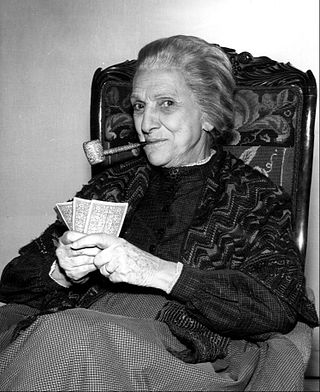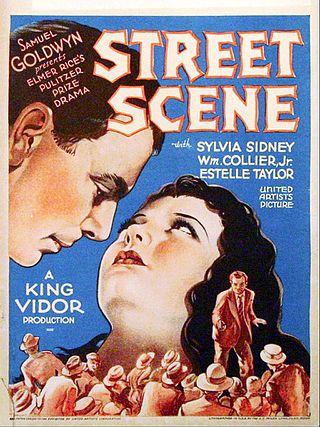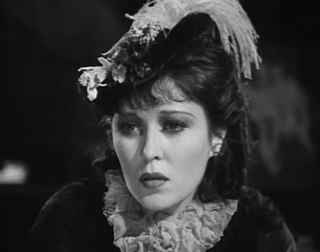
Edward Franklin Albee III was an American playwright known for works such as The Zoo Story (1958), The Sandbox (1959), Who's Afraid of Virginia Woolf? (1962), A Delicate Balance (1966), and Three Tall Women (1994). Some critics have argued that some of his work constitutes an American variant of what Martin Esslin identified and named the Theater of the Absurd. Three of his plays won the Pulitzer Prize for Drama and two of his other works won the Tony Award for Best Play.

Donald Margulies is an American playwright and academic. In 2000, he won the Pulitzer Prize for Drama for his play Dinner with Friends.

Elmer Rice was an American playwright. He is best known for his plays The Adding Machine (1923) and his Pulitzer Prize-winning drama of New York tenement life, Street Scene (1929).

Beulah Bondi was an American character actress; she often played eccentric mothers and later grandmothers and wives, although she was known for numerous other roles. She began her acting career as a young child in theater, and after establishing herself as a Broadway stage actress in 1925, she reprised her role in Street Scene for the 1931 film version.

Lewis Jefferson Mays is an American actor. He is the recipient of numerous accolades, including a Tony Award, a Helen Hayes Award, a Lucille Lortel Award, two Drama Desk Awards, two Outer Critics Circle Awards and three Obie Awards.
Eugene V. Frankel was an American actor, theater director, and acting teacher especially notable in the founding of the off-Broadway scene. Frankel served in the Army during World War II in entertainment and as a member of an aerial crew.

Alfred Fox Uhry is an American playwright and screenwriter. He has received an Academy Award, two Tony Awards and the 1988 Pulitzer Prize for dramatic writing for Driving Miss Daisy. He is a member of the Fellowship of Southern Writers.

Street Scene is an American opera by Kurt Weill (music), Langston Hughes (lyrics), and Elmer Rice (book). Written in 1946 and premiered in Philadelphia that year, Street Scene is based on the Pulitzer Prize-winning 1929 play of the same name by Rice.

Street Scene is a 1931 American pre-Code drama film produced by Samuel Goldwyn and directed by King Vidor. With a screenplay by Elmer Rice adapted from his Pulitzer Prize-winning play of the same name, Street Scene takes place on a New York City street from one evening until the following afternoon. Except for one scene which takes place inside a taxi, Vidor shot the entire film on a single set depicting half a city block of house fronts.

William Aloysius Brady was an American theater actor, producer, and sports promoter.

Erin Davie is an American actress and singer, best known for her performance as the young Edith Bouvier Beale in the Broadway production of the musical Grey Gardens, taking the part on Broadway at the Walter Kerr Theatre in 2006, after its initial run Off-Broadway at Playwrights Horizons.

Quiara Alegría Hudes is an American playwright, producer, lyricist and essayist. She is best known for writing the book for the musical In the Heights (2007), and screenplay for its film adaptation. Hudes' first play in her Elliot Trilogy, Elliot, A Soldier's Fugue was a finalist for the 2007 Pulitzer Prize for Drama. She received the 2012 Pulitzer Prize for Drama for Water by the Spoonful, her second play in that trilogy.

Erin O'Brien-Moore was an American actress. She created the role of Rose in the original Broadway production of Elmer Rice's Pulitzer Prize-winning play Street Scene (1929), and was put under contract in Hollywood and made a number of films in the 1930s. Her promising career on the stage and screen was interrupted by severe injuries she sustained in a 1939 fire. Following her recovery and extensive plastic surgery, she returned to the stage and character roles in films and television, including four seasons of the primetime serial drama Peyton Place (1965–1968).

Matthew O. McHugh was an American film actor who appeared in more than 200 films between 1931 and 1955, primarily in small cameo parts.

Beyond the Horizon is a play written by American playwright Eugene O'Neill. Although he first copyrighted the text in June 1918, O'Neill continued to revise the play throughout the rehearsals for its 1920 premiere. His first full-length work to be staged, Beyond the Horizon won the 1920 Pulitzer Prize for Drama.

Erin Ashley Mackey is an American stage actress and singer, known for playing the role of Glinda in the Chicago, Los Angeles, Broadway, and Second National Tour productions of the musical Wicked. She was also a double in 1998's The Parent Trap.
Lila Rose Kaplan is a 21st-century American playwright. She currently lives in Somerville, MA, where she was a Huntington Playwriting Fellow with the Huntington Theatre Company (2012-2014) as well as a Next Voices Playwriting Fellow with New Repertory Theatre (2015-2016).
The Playhouse Theatre was a Broadway theater at 137 West 48th Street in midtown Manhattan, New York City. Charles A. Rich was the architect. It was built in 1911 for producer William A. Brady who also owned the nearby 48th Street Theatre. After Brady died in 1944, it was sold to the Shubert Organization. From 1949 to 1952, it was an ABC Radio studio.

Lucas Hnath is an American playwright. He won the 2016 Obie Award for excellence in playwriting for his plays Red Speedo and The Christians. He also won a Whiting Award.

Warner Bros. Theatre Ventures is the live show, stageplay and musical production arm of Warner Bros. Discovery. The company forms a part of Warner Bros., one of the major business segments of Warner Bros. Discovery. Warner Bros. Theatre Ventures is led by Mark Kaufman.



















